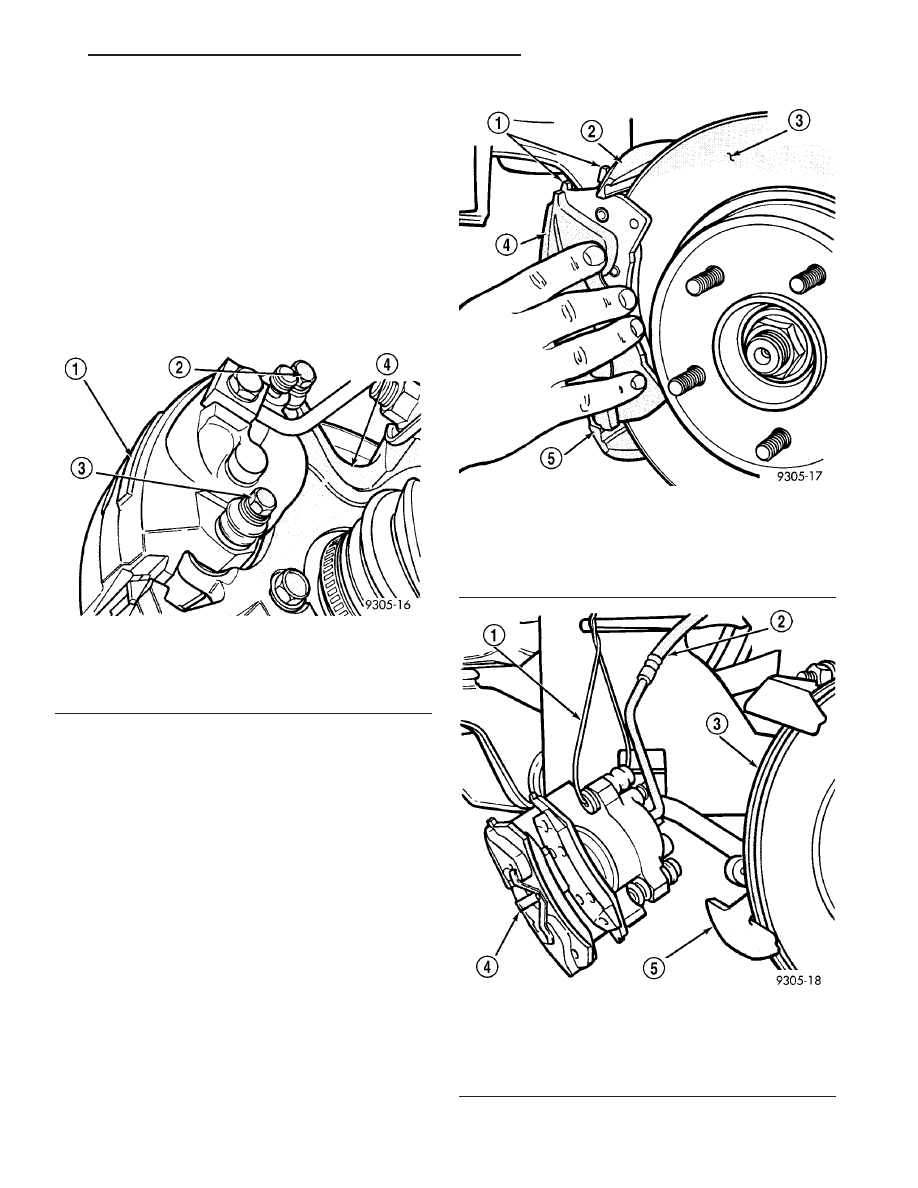Chrysler 300M, Dodge Interpid. Manual - part 30

BRAKE PADS/SHOES - FRONT
REMOVAL
REMOVAL - FRONT DISC BRAKE SHOES
(1) Raise vehicle. (Refer to LUBRICATION &
MAINTENANCE/HOISTING - STANDARD PROCE-
DURE)
(2) Remove front wheel and tire assemblies from
vehicle.
(3) Remove the two caliper guide pin bolts (Fig.
11).
NOTE: Note the positioning of the two rail shims
between the knuckle’s machined abutments and the
brake shoes.
(4) Remove
caliper
assembly
from
steering
knuckle. Proceed by first rotating top of caliper away
from steering knuckle, then lifting caliper off bottom
machined abutment on steering knuckle (Fig. 12).
Take care not to lose the two rail shims.
(5) Hang the caliper off to the side using wire or
bungee cord (Fig. 13). Do not allow the caliper to be
supported by the flexible brake hose. Damage to the
flexible brake hose may result.
Fig. 11 Caliper Guide Pin Bolts
1 - CALIPER ASSEMBLY
2 - GUIDE PIN BOLT
3 - GUIDE PIN BOLT
4 - STEERING KNUCKLE
Fig. 12 Caliper Removal/Installation
1 - BRAKE SHOES
2 - STEERING KNUCKLE
3 - BRAKING DISC
4 - CALIPER ASSEMBLY
5 - MACHINED ABUTMENT
Fig. 13 Supported Caliper
1 - WIRE HANGER
2 - FLEXIBLE BRAKE HOSE
3 - BRAKING DISC
4 - CALIPER ASSEMBLY
5 - STEERING KNUCKLE
LH
BRAKES - BASE BRAKE SYSTEM
5 - 15